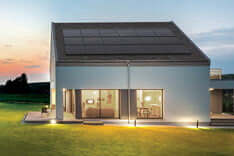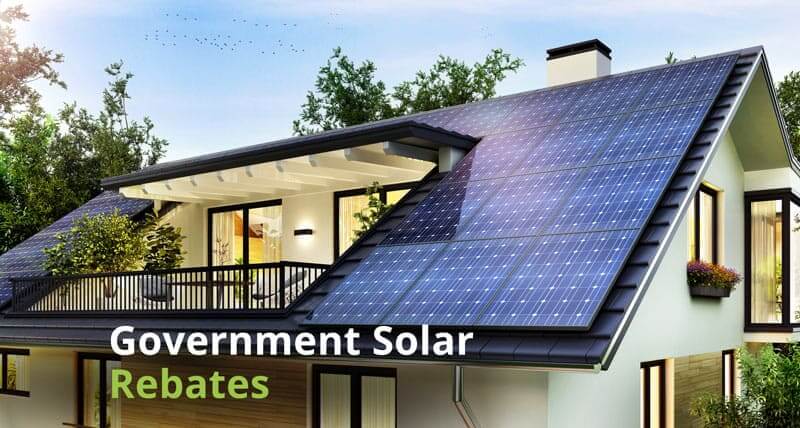Typically, power is generated through coal, nuclear, or hydroelectric means at a central power plant and then distributed throughout the town to provide electricity to both residential and business properties.
Distributed energy is the concept of many small-scale power or storage systems on the customer’s side of the meter, such as rooftop solar and batteries. These are all connected to the power grid and send excess electricity not being used by the home to help with overall local power demand.
With 32% of all households in Australia having solar systems installed, this DER accounts for huge amounts of power generation for the grid every day.
Table of Contents
TogglePhysical vs virtual DERs
A Distributed Energy Resource (DER) is a piece of hardware that uses or generates, stores or distributes power. Solar panels, electric vehicles, smart thermostats, house batteries, and solar inverters are examples of “behind-the-meter” equipment.
Small-scale electrical supply or demand resources are attached directly to the grid and are typically located near load centres so they can be used separately or in combination to generate grid value.
DER systems are decentralized or modular and contain plenty of both physical and virtual assets.
Physical DERs
Physical DERs typically have a capacity of less than 10 MW and can include diesel or natural gas engines, microturbines, solar arrays, tiny wind farms, battery energy storage systems, and other technologies.
The electricity utility, independent power providers, or local companies can all own and run them. The utility manages its functioning in the same way that huge central power plants are controlled, demanding starts and stops as needed.
Virtual DERs
Virtual DERs are made up of a group of physical assets that have been pooled and made available to the utility. They seem to have the utility of a single resource, similar to a power plant. And besides, what’s the difference between a solar farm with 1000 kW of solar capacity and a hundred solar arrays of 10 kW each?
Virtual DERs are made up of single-type or mixed-type assets. Behind-the-meter diesel generators, solar panels, and batteries, for instance, can be combined to construct a virtual DER.
The virtual DER that results has its own unique functionality. Virtual power plants are created when virtual DERs aggregate several megawatts of capacity (VPPs).
Why is Distributed Energy Resources important?
DER is a less expensive and speedier alternative to building huge central power plants and high-voltage transmission links. They have the potential to provide consumers with lower costs, more service reliability, higher power quality, increased energy efficiency, energy independence, safety, and sustainability.
How do DERs work?
Electric loads that can be changed, lowered, or disconnected on demand are known as “demand response resources”. Residents in some areas, for example, have the choice of participating in demand-response programs.
For example, the utility or program manager installs remotely controlled disconnect switches on participating homeowners’ air conditioning units or electric water heaters. To lessen the burden on the electric system, each individual air conditioner or water heater can be turned off as needed. Larger virtual DERs combine hundreds or thousands of households. In conclusion, a resource the size and function of a small power plant has been created.
Even so, if the utility’s goal is to ensure that power generation always equals demand, then lowering demand has the same effect as boosting generation.
What do Distributed Energy Resources have to do with VPPs?
Virtual Power Plants or VPPs are a collection of DERs that can be operated remotely from central control to monetize your power better as a group, yet still function independently if needed. You can join a VPP and nominate your energy generation or storage resource to be added to a pool of local power plants. As a group, you can sell power at a high price back to the power company or direct to local customers.
Common types of Distributed Energy Resources
Electric Vehicles
EVs are a significant and rapidly expanding DER category. EVs are very valuable as they have large batteries for power storage which can be deployed on-demand. A solar system on the other hand can only send power during certain hours of the day and generally not before 10 am and after 4 pm.
EVs can operate as a dynamic DER asset in time thanks to smart charging, which allows them to charge only when there is excess supply on the grid or when prices are low. EVs are a potent DER and a vital asset in the energy transition because of their capacity to adapt in real-time to supply and demand fluctuations.
Solar And Batteries
Both solar and batteries are distributed energy resources (DERs) that serve to balance and stabilize the grid. Solar energy is produced close to where it will be used, reducing the need for energy to be produced at huge centralized power plants using polluting fossil fuels and transporting miles to the same endpoint.
When there is an oversupply of energy and prices are low, batteries can store extra energy and then dispatch it when energy is scarce and prices are high.
EV Charger
EV chargers can suspend charging linked EVs during peak hours, and wait until power is plentiful and costs are cheap to charge connected EVs. They also can inject additional energy into the grid via V2G whenever it is needed without leaving the car short of power. EV chargers definitely play a huge role as DERs.
Thermostats
Because of their capacity to help the grid become more stable during instances of instability or peak demand, thermostats are increasingly being considered DERs. To become a controllable load, most thermostats may be managed using a thermostat API.
During moments of grid instability, thermostats can also react in real-time and minimise the use of HVAC systems to reduce the energy load and profile of consumers. All DERs have the ability to operate as grid resources, and thermostats are no exception.
Synchronization and connection
The equipment ensures that the electricity generated by DERs is in phase with the electricity generated by the grid. For example, solar inverters convert DC current from solar panels into AC electricity. Their job is to generate a precisely synced sinusoidal AC waveform with the grid.
Transfer switches also ensure that when generation resources are not in use, they are completely disconnected from the grid.
Metering equipment
Metering equipment is required to ensure that the owners of individual DERs are fairly compensated for the supply and demand of their resources. Smaller DER assets, such as residential solar systems, rely on their main utility meter to perform this function.
For larger and more complicated DERs, upgrading to a smart meter capable of two-way metering and time-of-day metering is usually required. Homes with solar panels can run their meter backwards while exporting solar electricity to the grid where solar net-metering programmes exist, essentially receiving a credit on their utility bill.
Smart meters can identify power quality concerns such as poor synchronization or voltage dips in addition to detecting the quantity of power exported to the grid.
Aggregation software
Aggregation software is essential for managing and operating virtual DERs. For utilities and grid operators, individually regulating thousands of separate resources would be impractical. Aggregation software provides a streamlined interface with which operators can work efficiently.
How DERs can aid in climate change mitigation
The grid can become more resilient and reliable because of DERs. DERs do not waste energy due to line loss over lengthy transmission lines because the electricity is generated close to the point of use. This means that more of the energy generated will be utilised.
- Mostly green power: Most DERs are renewable such as rooftop solar, so the more power generated and used by these systems the better off the environment will be.
- Localised power: Because the power is produced where it is being used, there is no need for hundreds of kilometers of cables that need to be produced, erected, maintained and replaced on a regular basis. Using DERs will mitigate the need to mine the raw materials and produce the infrastructure.
Benefits of DERs
DERs have a wide range of skills to give us. They can deliver positive net value to the power system by avoiding infrastructure investments, increasing resilience, and increasing renewable energy inclusion. There are four more benefits:
Less expensive energy
When DERs eliminate the need to generate energy from another stream, they provide energy value. This value is made up of two parts: averted energy output by generation resources and avoided transmission and distribution network line losses. As a result of the lack of line losses, your company’s energy costs are reduced.
Capacity at the system level
Because they defer or minimize investment in generating and transportation assets, DERs provide system-level capacity value. The value of DERs’ system capacity is determined by their utilization capability during peak load times.
Operating reserves
When DERs can be used to enhance supply or reduce demand on the grid in place of central generators that would otherwise be deployed in the event of contingencies such as forced interruptions, they provide operating reserve value.
Capacity at the distribution level
When DERs delay or avoid investing in distribution assets, they give distribution-level capacity value. The value of DERs’ distribution capacity is determined by their utilization capabilities during local peak hours.
Most powerful players in DER space
Start-Ups
Several start-up companies have been participating in both business and residential demand response systems that are available in the markets. For example, there is a company named Leap, which is a software-focused firm that is developing a platform for all DERs to participate in both demand response and price signal response.
Large Corporates
Some of the large corporates include:
Enel X
Enel X is a seasoned player in the DER industry. It has installed batteries and made a big push for smart charging with the launch of Enel X Way.
Voltus
Voltus is a prominent demand response service in North America and is developing a platform for distributed energy resources (DERs). They function in all unregulated wholesale markets that have demand responses. Voltus’ concentration on technology has enabled them to enroll major industrial clients in demand response programmes with fast response and a high rate.
GE, Siemens, Vestas
GE, Siemens, Vestas, and others are among the global Distributed Energy Resources (DERs). The top three corporations in the world control more than 30% of the market. Asia-Pacific is the biggest market, accounting for about 60% of total sales, followed by Europe and North America, which account for around 20% and 15% of total sales, respectively.
Market Research and Analysis: The global Distributed Energy Resources (DERs) market is expected to grow at a CAGR of 2.6 per cent from USD 49400 million in 2020 to USD 50020 million in 2027.
Table of Contents
Toggle




